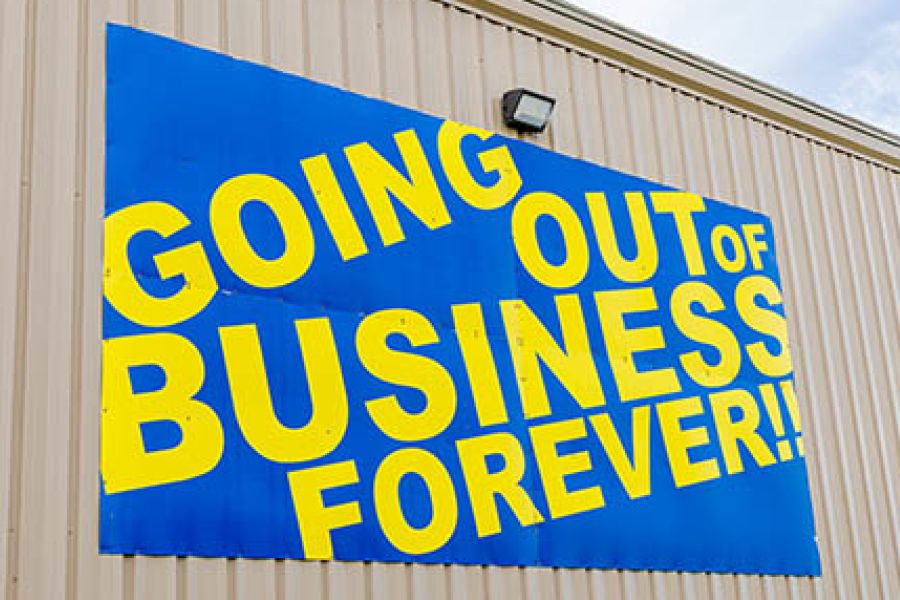The holiday season is here and many people plan to donate to their favorite charities or give money or assets to their loved ones before the end of the year. Here are the basic tax rules involved in these transactions. Donating to charity In 2022, in order to receive a charitable donation write-off, you must itemize deductions on your tax return. What if you want to give gifts of investments to your favorite charities? There are a couple of points to keep in mind. First, don’t give away investments in taxable brokerage accounts that are currently worth less than what you paid for them. Instead, sell the shares and claim the resulting capital loss on your tax return. Then, give the cash proceeds from the sale to charity....

Middle-market businesses lose an average of almost $300,000 annually to invoice fraud, according to a recent survey by software company Medius and researcher Censuswide. Invoice fraud can be challenging to spot — and even more difficult to recover from — but your company can take steps to prevent it from happening. Common types The most common type of invoice fraud is fraudulent billing. In billing schemes, a real or fake vendor sends an invoice for goods or services that the business never received (and may not have ordered in the first place). Overbilling schemes are similar. Your company may have received goods it ordered, but the vendor’s invoice is higher than agreed upon. Duplicate billing is where a fraud perpetrator sends you the same invoice more than...
Businesses shut down for many reasons. Some of the reasons that businesses shutter their doors: An owner retirement, A lease expiration, Staffing shortages, Partner conflicts, and Increased supply costs. If you’ve decided to close your business, we’re here to assist you in any way we can, including taking care of the various tax obligations that must be met. For example, a business must file a final income tax return and some other related forms for the year it closes. The type of return to be filed depends on the type of business you have. Here’s a rundown of the basic requirements. Sole Proprietorships. You’ll need to file the usual Schedule C, “Profit or Loss from Business,” with your individual return for the year you close the business. You...
Many people have savings bonds that were purchased many years ago. Perhaps they were given to your children as gifts or maybe you bought them yourself. You may wonder how the interest you earn is taxed. And if they reach final maturity, what action do you need to take to ensure there’s no loss of interest or unanticipated tax consequences? Interest deferral Series EE Bonds dated May 2005 and after earn a fixed rate of interest. Bonds purchased between May 1997 and April 30, 2005, earn a variable market-based rate of return. Paper Series EE Bonds, issued between 1980 and 2012, are sold at half their face value. For example, you pay $25 for a $50 bond. The bond isn’t worth its face value until it matures. New...
When valuing a business, it’s important to clearly identify the appropriate premise of value. There are two basic options: going concern value or liquidation value. In general, liquidation value sets the floor for a company’s value. When a company is “worth more dead than alive” — such as in a Chapter 7 bankruptcy filing — liquidation value is typically the appropriate premise of value. But it also may be relevant in other situations, as a recent Michigan Court of Appeals case demonstrates. Going concern vs. liquidation value Most valuations focus on a business’s going-concern value. That is, what’s the value of a business enterprise that’s expected to continue to operate into the future? But in certain situations, liquidation value can be an important benchmark. There are two types...
These days, most businesses buy or lease computer software to use in their operations. Or perhaps your business develops computer software to use in your products or services or sells or leases software to others. In any of these situations, you should be aware of the complex rules that determine the tax treatment of the expenses of buying, leasing or developing computer software. Software you buy Some software costs are deemed to be costs of “purchased” software, meaning it’s either: Non-customized software available to the general public under a nonexclusive license, or Acquired from a contractor who is at economic risk should the software not perform. The entire cost of purchased software can be deducted in the year that it’s placed into service. The cases in which the...
The Great Transformation (Part 2) - The Disruption of Transportation As posted to the Tony Seba YouTube Channel on 10/31/2022 (Run Time 18 min, 23 sec) Part 2 of Tony Seba’s latest presentation on what he calls "The Great Transformation", discusses the disruption of transportation by autonomous, electric, fleet vehicles: Transportation as a Service. "The Great Transformation" is a deep dive into the key technologies that are converging in the 2020s and how they will disrupt the five foundational sectors of the economy: Information, Food, Energy, Transportation and Materials. Seba’s work focuses on the complex patterns and dynamics of change, disruption, and transformation at all scales. He is the author of Clean Disruption of Energy and Transportation, and co-author of Rethinking Humanity. The rest of the presentation can be seen here: The...
Two tax benefits are available to offset the expenses of adopting a child. In 2022, adoptive parents may be able to claim a credit against their federal tax for up to $14,890 of “qualified adoption expenses” for each child. This will increase to $15,950 in 2023. That’s a dollar-for-dollar reduction of tax. Also, adoptive parents may be able to exclude from gross income up to $14,890 in 2022 ($15,950 in 2023) of qualified expenses paid by an employer under an adoption assistance program. Both the credit and the exclusion are phased out if the parents’ income exceeds certain limits. Parents can claim both a credit and an exclusion for expenses of adopting a child. But they can’t claim both a credit and an exclusion for the same...
When new technologies emerge, it can take time for the general public to learn how they work. Non-fungible tokens, or NFTs, first appeared in 2014, yet many people are still confused about what they are and how to buy and store them. This gives criminals who understand the technology an advantage. In addition to money laundering, tax evasion and terrorist funding, NFTs are being used to commit fraud and steal from unsuspecting asset buyers. For example, more than $100 million in NFTs was stolen between July 2021 and July 2022, according to analytics company Elliptic. Snapshot view In their simplest form, NFTs are immutable digital assets — often related to art, sports, music, digital culture and avatars — linked to the blockchain, the digital ledger used to...
No one needs to remind business owners that the cost of employee health care benefits keeps going up. One way to provide some of these benefits is through an employer-sponsored Health Savings Account (HSA). For eligible individuals, an HSA offers a tax-advantaged way to set aside funds (or have their employers do so) to meet future medical needs. Here are the key tax benefits: Contributions that participants make to an HSA are deductible, within limits. Contributions that employers make aren’t taxed to participants. Earnings on the funds in an HSA aren’t taxed, so the money can accumulate tax-free year after year. Distributions from HSAs to cover qualified medical expenses aren’t taxed. Employers don’t have to pay payroll taxes on HSA contributions made by employees through...
- 1
- 2
- 3
- 4
- 5
- 6
- 7
- 8
- 9
- 10
- 11
- 12
- 13
- 14
- 15
- 16
- 17
- 18
- 19
- 20
- 21
- 22
- 23
- 24
- 25
- 26
- 27
- 28
- 29
- 30
- 31
- 32
- 33
- 34
- 35
- 36
- 37
- 38
- 39
- 40
- 41
- 42
- 43
- 44
- 45
- 46
- 47
- 48
- 49
- 50
- 51
- 52
- 53
- 54
- 55
- 56
- 57
- 58
- 59
- 60
- 61
- 62
- 63
- 64
- 65
- 66
- 67
- 68
- 69
- 70
- 71
- 72
- 73
- 74
- 75
- 76
- 77
- 78
- 79
- 80
- 81
- 82
- 83
- 84
- 85
- 86
- 87
- 88
- 89
- 90
- 91
- 92
- 93
- 94
- 95
- 96
- 97
- 98
- 99
- 100
- 101
- 102
- 103
- 104
- 105
- 106
- 107
- 108
- 109
- 110
- 111
- 112
- 113
- 114
- 115
- 116
- 117
- 118
- 119
- 120
- 121
- 122
- 123
- 124
- 125
- 126
- 127
- 128
- 129
- 130
- 131
- 132
- 133
- 134
- 135
- 136
- 137
- 138
- 139
- 140
- 141
- 142
- 143
- 144
- 145
- 146
- 147
- 148
- 149
- 150
- 151











